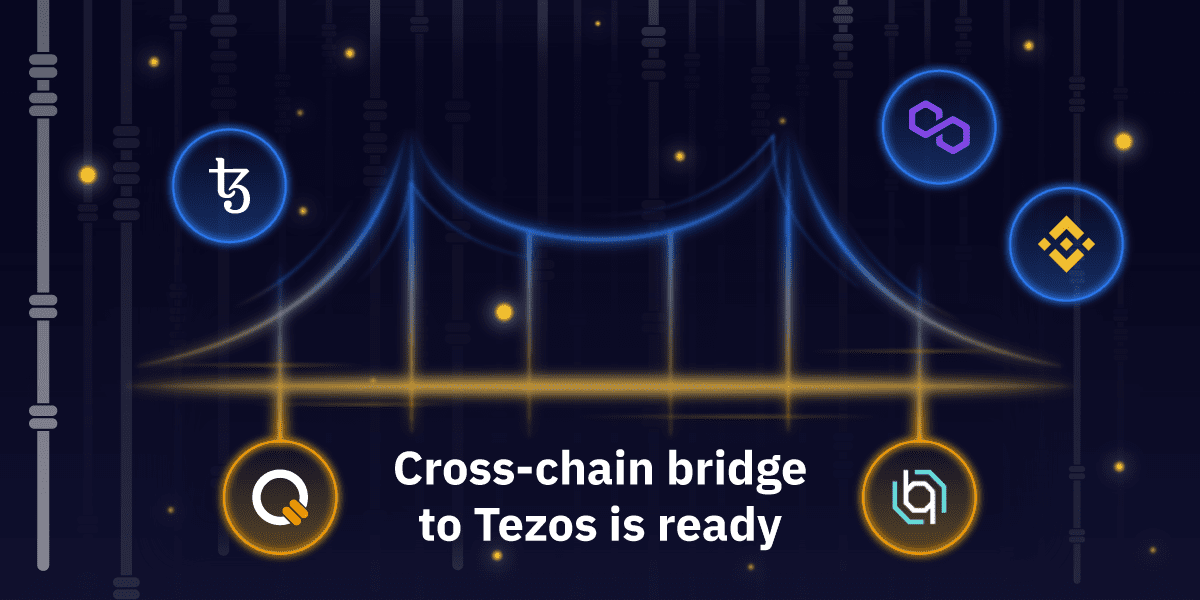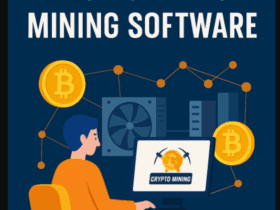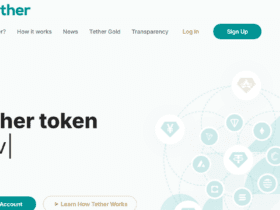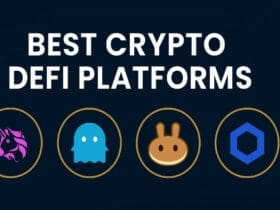This article will discuss Cross-Chain Asset Management Tools which are changing the DeFi ecosystem. These tools allow users to transfer, swap, and manage digital assets across several blockchains.
Through the enhanced interoperability, security, and overall user experience, tools empower novice and expert users alike, enabling them to manage their cryptocurrencies across multiple different networks.
Key Points & Top Cross-Chain Asset Management Tools
| Tool Name | Key Features & Highlights |
|---|---|
| Defiway | Leader in cross-chain innovation; supports multiple blockchains with fast, secure swaps. |
| Synapse Protocol | Efficient and cost-effective bridging; strong liquidity and low fees. |
| MultiChain | Highly customizable; supports private chains and enterprise-grade interoperability. |
| AnySwap | Simple UI; supports a wide range of assets and chains with decentralized governance. |
| PolyBridge | Optimized for speed and scalability; ideal for high-volume transfers. |
| ChainBridge | Advanced user features; supports custom asset types and governance models. |
| Connext | Focused on Layer 2 interoperability; fast and low-cost transfers across rollups. |
| PortalBridge | Reliable and user-friendly; integrates well with major wallets and dApps. |
| Router Protocol | Offers multi-chain flexibility; supports routing across EVM and non-EVM chains. |
| Allbridge | Best for multi-asset transfers; supports stablecoins, NFTs, and tokens across chains. |
10 Top Cross-Chain Asset Management Tools
1. Defiway
This easy to use interface is designed to make Defiway a user friendly cross chain defl centralized finance interface no matter your experience level.
They highlight speed, low cost, and security and decentralization with smart contract automation.
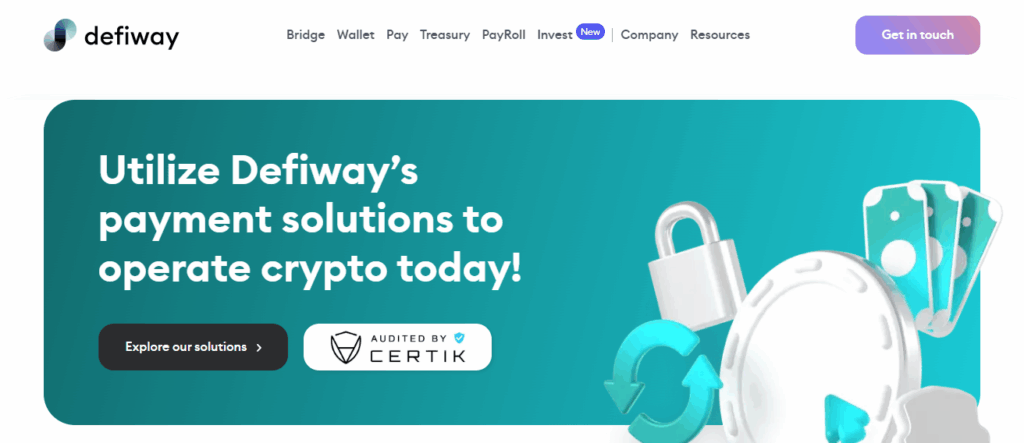
Defiway is excellent portfolio management on cross chain crypto networks like Ethereum and Binance, and is one of the best deployed multi-bridges with the most growing defl integrations.
It is fantastic designed with portfolio and asset management in the defl world as it is paired with growing defl movement and management to cross chains.
Features Defiway
Multi-chain Wallet – Interface for managing wallets across Ethereum, BSC, Solana, and more.
Cross-chain Swaps – Go to any blockchain and swap tokens instantly.
Secure Payments – Transfers, swaps, and bridging payments can be completed in a secured environment.
User-Friendly Apps – Apps are designed for easy management.
2. Synapse Protocol
Synapse Protocol is widely regarded as one of the most versatile and secure cross-chain bridges and asset managers in the DeFi space.
Supporting token swaps, cross-chain messaging, and liquidity provision, Synapse can handle a variety of DeFi use cases.
The protocol utilizes optimistic verification, which enables quick, inexpensive, and secure cross-chain transactions.
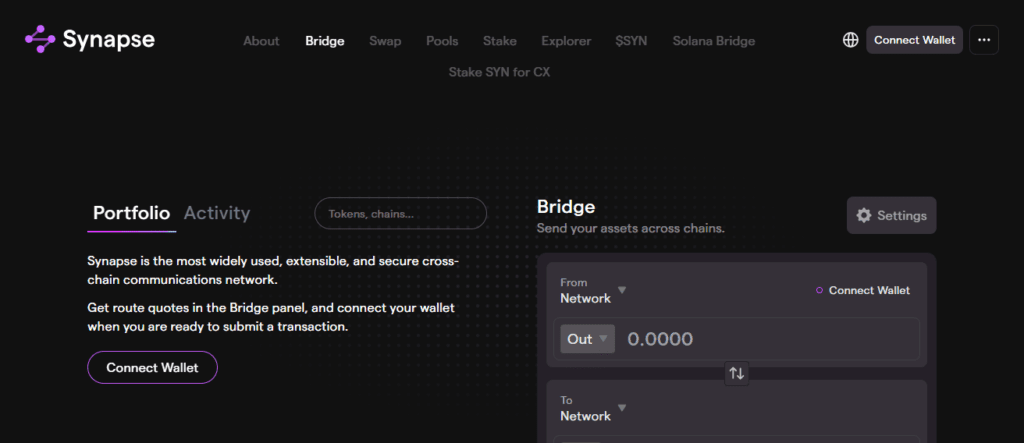
Synapse bridges and supports major cross-chain functionalities on Ethereum, Avalanche, BNB Chain, and Arbitrum. Developers can build cross-chain synapse applications as well.
The Synapse ecosystem is growing, and, in terms infrastructure for decentralized asset management, Synapse is scalable and decentralized.
Features Synapse Protocol
Decentralized Bridge – Trustless and secured transfers.
Liquidity Pools – Pools create liquidity for swaps and decrease slippage.
Cross-Chain Messaging – Message, transact, and share data across multiple chains.
Interoperability Focused – Different ecosystems are linked for improved access.
3. MultiChain
MultiChain is an enterprise-grade interoperable cross-chain solution designed for the complex use cases of integrating public and private blockchains.
It enables organizations to build and securely bridge custom blockchains. This is critical for organizations and businesses that manage digital assets across multiple disjointed systems.
MultiChain also supports the movement of assets between blockchains through permissioned access, smart contracts, and data streams.
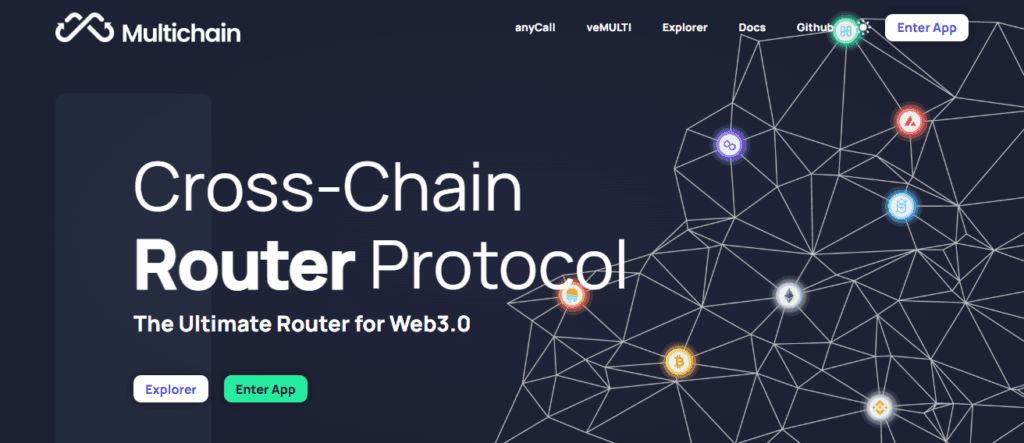
Built on the Bitcoin and Ethereum protocols, MultiChain is widely adopted and “verticalized” for use in financial services, supply chain, and even government.
The solutions that MultiChain provides focus on complex cross-chain functionalities which can be executed with high performance and tight security.
Features MultiChain
Router Protocol – Assemble a string of blockchains for flexible and seamless asset movement.
Wide Blockchain Support – Support for Ethereum, BSC, Polygon, and more.
Secure Transfers – Cross-chain transfers of assets are secured with strong mechanisms.
Developer-Friendly – Cross-chain functionalities can be embedded in other apps via provided APIs.
4. AnySwap
AnySwap is a borderless decentralized cross-chain swap protocol that allows users to conduct borderless transactions across different blockchains.
AnySwap carries a variety of tokens across different blockchains that include Ethereum, Binance Smart Chain, Fantom, and Polygon.
AnySwap employs Fusion’s DCRM for asymmetric safe key management and for executing atomic swaps and its interface is rather fast and easy, thus attracting DeFi users.
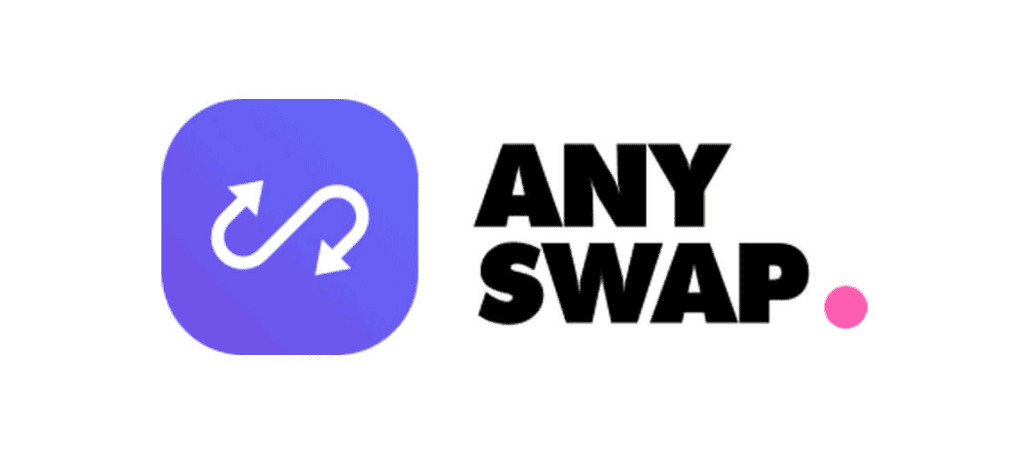
DeFi users are also attracted by the liquidity pools and staking available on the platform. For users who wish to conduct transactions within a decentralized system
AnySwap is a safe transit hub designed to facilitate asset transfers across multiple blockchains, and its decentralized governance and support for additional chains makes it a robust system.
Features AnySwap (Multichain)
Decentralized Exchange – Enables blockchain interoperability without middlemen.
Fusion DCRM Technology – Transfers assets in a trustless system.
Multiple Asset Support – Interoperates with multiple tokens and blockchain networks.
Seamless User Experience – Cross-chain transactions made easy.
5. PolyBridge
PolyBridge is a cross-chain bridge made by the Poly Network for cross-chain asset transfers between different blockchains.
It caters for cross-chain interoperability and asset transfers across Ethereum, Neo, and Ontology, and other blockchains.
It utilizes smart contracts with classical and modern cryptographic techniques for safe, provably secure cross-chain transactions.

PolyBridge is designed for cross-chain high-frequency transactions with low latency, and is therefore preferred by cross-chain dApp developers and users with cross-chain wallets.
PolyBridge prioritizes decentralization and has a high level of transparency, and is consistently improving their ecosystem for cross-chain asset management.
PolyBridge is certainly a leader in their field, and continues to strengthen their asset management ecosystem.
Features PolyBridge
Heterogeneous Chain Support – Moves assets across different types of blockchains.
Secure Cross-Chain Transfers – Transfers assets across blockchains using high-security bridge protocols.
Fast Transaction Speed – Asset bridging takes the least time possible.
User-Friendly Interface – Designed for easy navigation, catering to all user levels.
6. ChainBridge
ChainSafe’s ChainBridge is an open-source cross-chain bridge that links EVM-compatible blockchains to non-EVM blockchains.
While designed with advanced users and developers in mind, it’s highly customizable in asset type, governance model, and message passing.

ChainBridge facilitates secure and borderless token and information transfers on Ethereum, Polkadot, and Cosmos and is easily modularized into existing dApps and protocols.
With community support and development, it is customizable cross asset management. ChainBridge is invaluable when flexible and scalable cross-chain communication is needed.
Features ChainBridge
Modular Framework – Custom bridges for specific use cases can be built.
Customizable Security – Security measures can be adjusted for each bridge.
Supports Multiple Chains – Works with Ethereum, BSC, Polygon, etc.
Asset & Data Transfers – Moves tokens and arbitrary data across blockchains.
7. Connext
Connext is a low-cost, fast cross-chain bridge with a primary focus on Layer 2 interoperability. Via the Vector protocol, it facilitates trustless transfers between rollups and the Ethereum mainnet.
For DeFi application developers and users looking for scalable solutions, Connext is a must-have. The protocol supports real-time liquidity transfer and cross-chain communication, making it indispensable for decentralized exchanges and wallets.
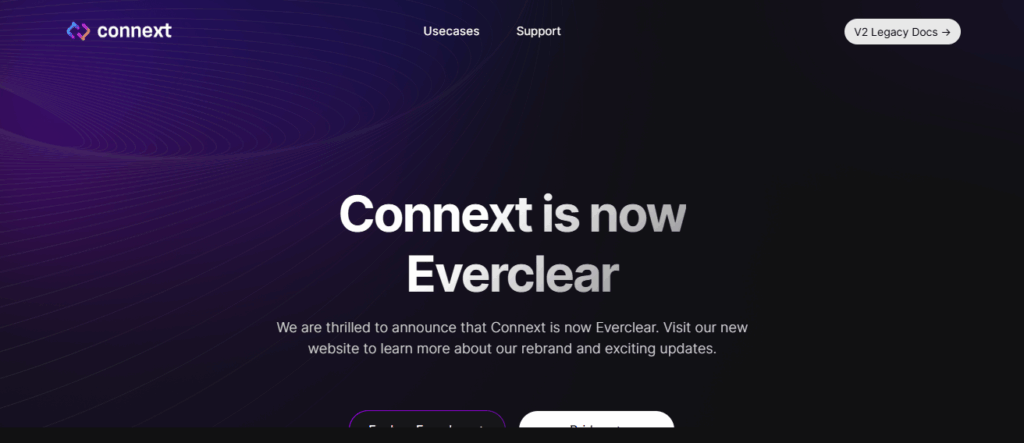
With considerable support for Arbitrum and Optimism, Connext is an invaluable tool for users in the Ethereum ecosystem.
It helps alleviate congestion and high fees on the Ethereum mainnet, with a focus on overriding speed, low-cost, and decentralization.
Features Connext
Fast Transfers – Cross-chain asset transfers in real-time.
Scalable Protocol – Designed to handle high transaction volumes.
Modular Design – Access to easy integration within its solutions for DeFi apps.
Secure & Trustless – Guarantees bridging without third parties.
8. PortalBridge
Wormhole developed PortalBridge as a cross-chain bridge connecting Solana, Ethereum, BNB Chain, and Terra. Utilizing a network of guardians, it provides rapid and secure asset transfers.
Additionally, PortalBridge offers a wide array of functionalities such as token bridging, NFT transfers, and cross-chain messaging.
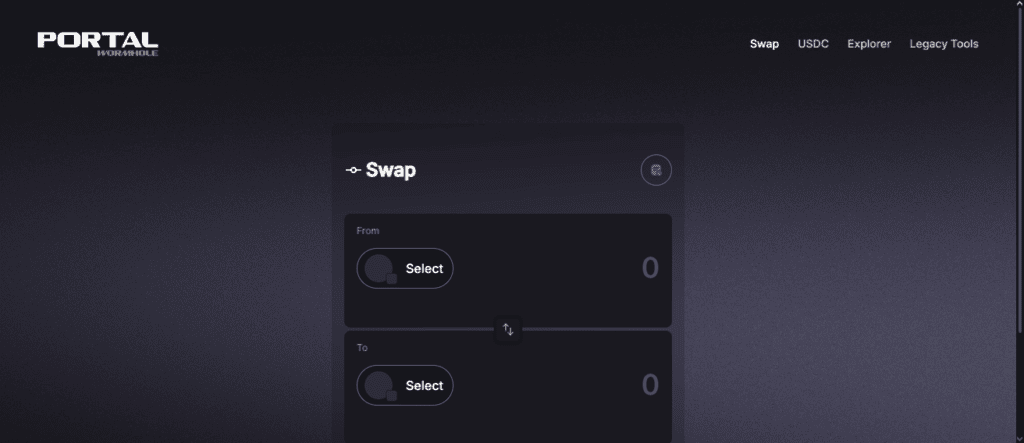
Its integration into major wallets and decentralized applications provides exceptional user experience. Emphasizing real-time monitoring, governance, and access controls, PortalBridge also upholds decentralization and self-managed transparency.
As part of the Wormhole ecosystem, it offers reliable cross-chain asset management across a rapidly growing number of applications.
Features PortalBridge
Wormhole Powered – Leverages the Wormhole network for trustworthy cross-chain transfers.
Unlimited Token Transfers – Asset movement across chains is unlimited.
High Security Standards – Protects users against exploits and attacks.
Fast & Efficient – Moves assets quickly to and from multiple blockchains.
9. Router Protocol
Router Protocol facilitates cross-chain asset management and communication across EVM and non-EVM chains.
It provides token transfer, liquidity aggregation, and dApp interoperability services. Smart contracts and relayers manage cross-chain operations securely and efficiently.
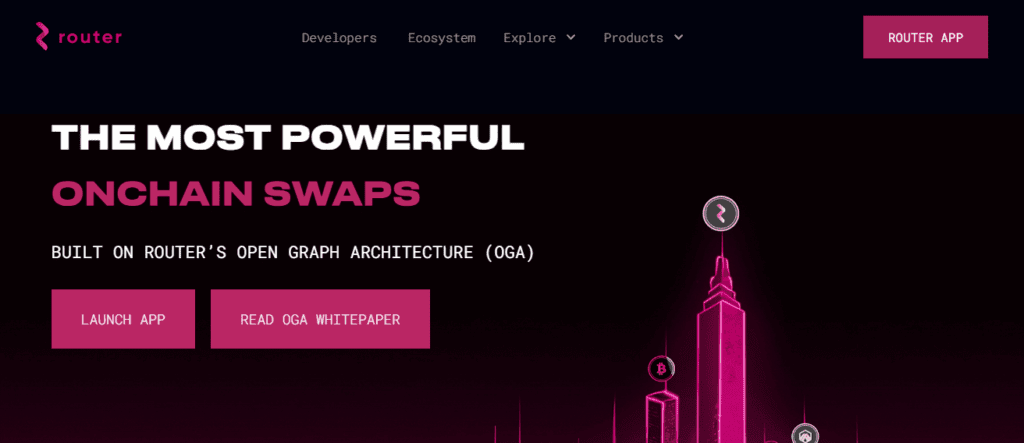
Supported chains include Ethereum, Polygon, Avalanche, and Fantom. The Protocol also provides SDKs and APIs for cross-chain application developers.
With a growing user experience focus and cross-chain application management, Router Protocol strengthens the decentralized application ecosystem and enables asset management across multi-chain environments.
Features Router Protocol
Cross-Chain Messaging – Enables messaging and the execution of transactions across chains.
Liquidity Aggregation – Gathers liquidity from various chains for hassle-free swaps.
Interoperability Solutions – Efficiently joins disparate ecosystems.
Developer Tools – Provides integration SDKs for dApps.
10. Allbridge
Allbridge is a simple cross-chain user bridge that can manage your stablecoins, tokens, and NFTs. It joins together EVM and non-EVM blocks like Ethereum, Solana, Terra, and Near.
Allbridge focuses on being fast and cheap, which is invaluable to new users. It features clear and instant fees, transaction updates, and popular wallet integrations.
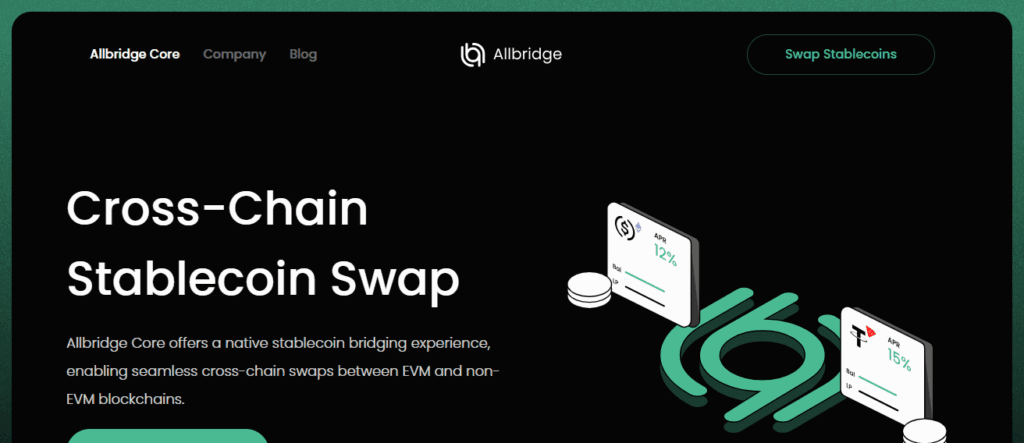
Allbridge manages asset earning through liquidity offering staking. Allbridge is one of the most secure and dependable cross-chain anchor points
for your wireless asset migrations with a decentralization focus, developing network and promise to maintain the cheap pricing focus on being quick and accessible to all user types.
Features Allbridge
Multi-Chain Bridge – Token transfers across many blockchains.
Secure Asset Movement – Transfers are protected by strong protocols.
User Friendly Interface – Simplified navigation to manage assets for cross-chain.
Wide Ecosystem Support – Works with Ethereum, Polygon, Avalanche, and many others.
Conclusion
To sum up, the ways in which Defiway, Synapse Protocol, and Multichain are cross-chain asset management tools are transformative to the decentralized finance space, facilitating system interoperability between blockchains.
These platforms facilitate the fast, secure, and convenient transfer, swap, and liquidity management of assets without traversing different networks.
Collectively, they empower users in the effective management of their crypto portfolios and are the drivers in the evolution of DeFi ecosystems in the interconnected phase of their development.
FAQ
They are platforms that enable users to transfer, swap, and manage digital assets across multiple blockchains seamlessly.
They improve interoperability, reduce transaction friction, and expand the usability of DeFi applications across different networks.
Defiway, Synapse Protocol, Multichain (AnySwap), PolyBridge, ChainBridge, Connext, PortalBridge, Router Protocol, and Allbridge.
Yes, most use decentralized protocols, advanced encryption, and secure bridging mechanisms to protect user assets.
Yes, platforms like Defiway and Allbridge have user-friendly interfaces for both beginners and advanced users.





